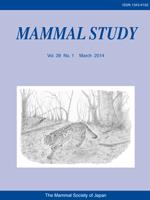To investigate the factors that influence resting site preference of the Japanese dormouse Glirulus japonicus, we determined the effect of tree resources in a microhabitat on the use of nest boxes as daytime resting sites. The study area, which was in Mt. Nagakura National Forest in central Japan, was divided into 200 plots. In each plot, a nest box specially designed to harbor dormice was attached to the trunk or branch of a tree. All living trees in the microhabitat around nest boxes were recorded and categorized into 3 resource types: food, nesting materials, and other resources. We then incorporated a generalized linear model to determine how resource types affected the frequency of nest box use by dormice. A positive correlation was observed between the frequency of nest box use and abundance of trees of lower strata that were used as food resources. On the other hand, the abundance of trees categorized as other resources was negatively correlated with the frequency of nest box use. These findings suggest that dormouse resting site preference is influenced mainly by the abundance of food resources in the microhabitat.
How to translate text using browser tools
1 March 2014
Influence of Tree Resources on Nest Box Use by the Japanese Dormouse Glirulus japonicus
Yumena Nakamura-Kojo,
Nobuaki Kojo,
Toshiyuki Ootsuka,
Masato Minami,
Hidetoshi B. Tamate
ACCESS THE FULL ARTICLE

Mammal Study
Vol. 39 • No. 1
March 2014
Vol. 39 • No. 1
March 2014
Japanese dormouse
microhabitat
nest box
tree resource




